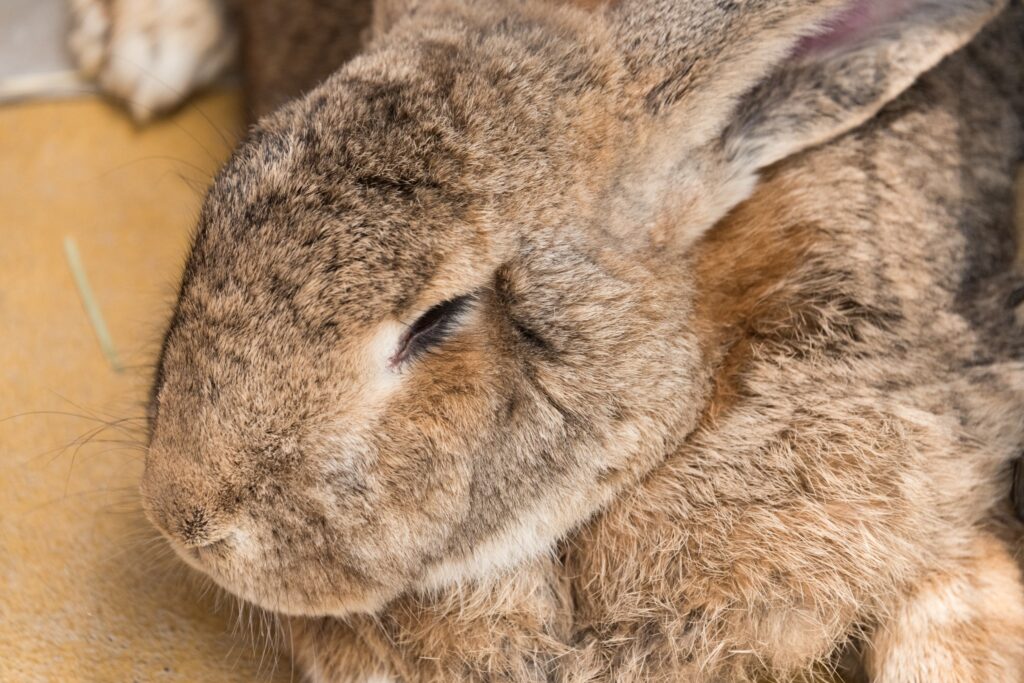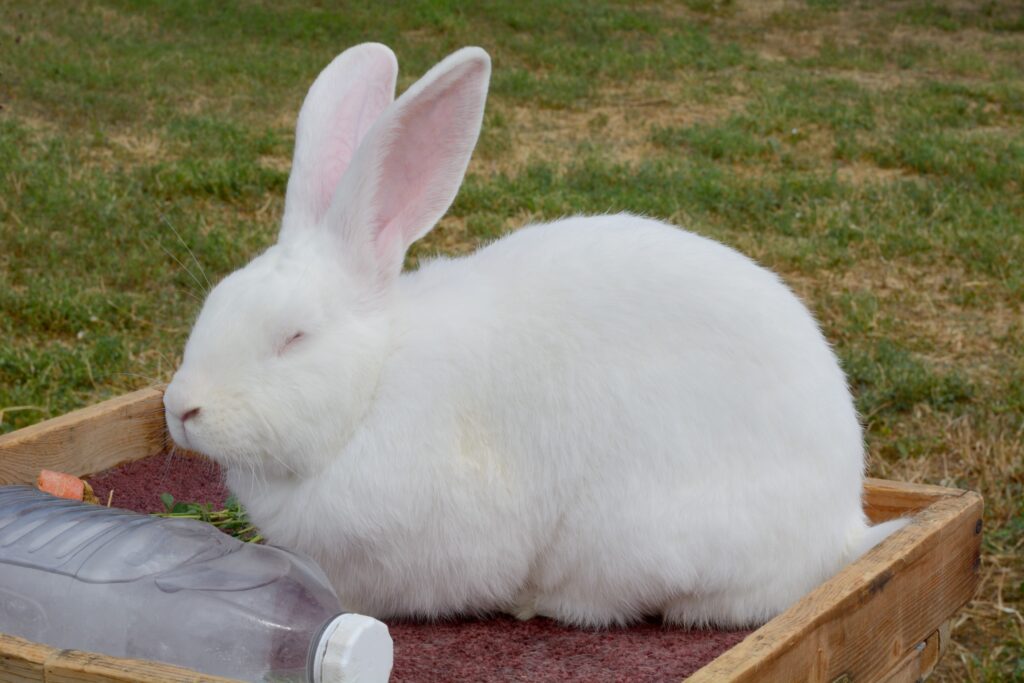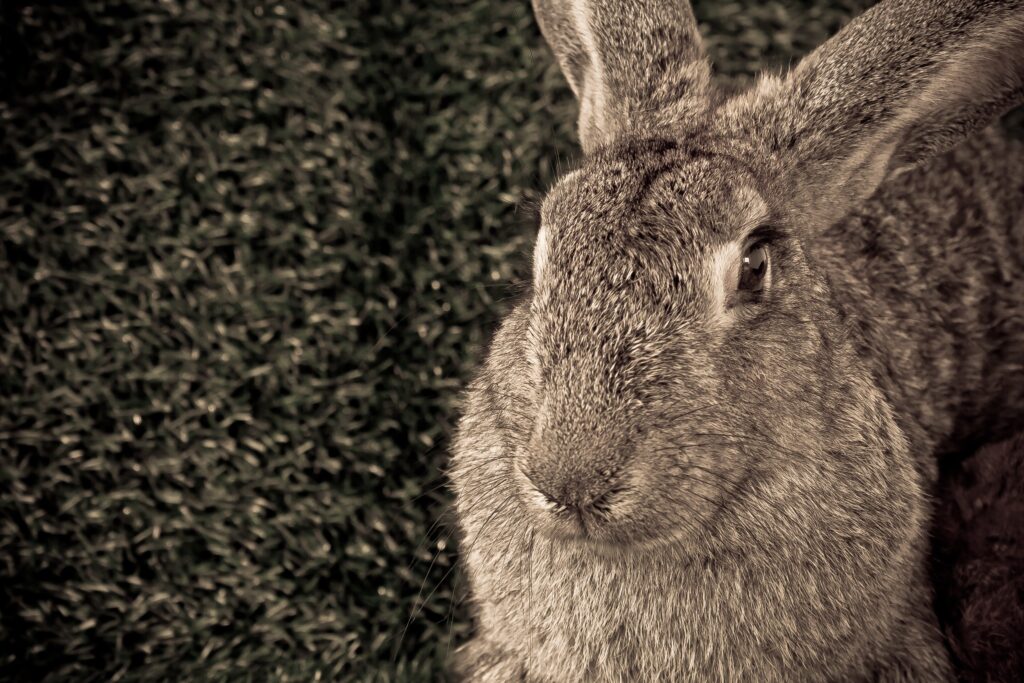Why Flemish Giants are So Big: A Look into Their Genetics and Evolution
Flemish Giants are known for their massive size, and it’s no secret that they are the largest breed of rabbits in the world. These rabbits can weigh up to 22 pounds and measure over four feet long, making them a fascinating subject for animal enthusiasts. But what makes them so big?

The answer lies in their genetics. Flemish Giants have been selectively bred over time to achieve their impressive size. Breeders would choose the largest rabbits for mating, resulting in even bigger offspring than their parents. This process continued over generations, leading to the development of the giant Flemish rabbit we know today.
Interestingly, Flemish Giants were originally bred for their meat and fur rather than their size. They were first seen in Flanders, Belgium, in the 16th century and were raised by farmers for their meat and fur. However, as their size became more impressive, they became popular as show rabbits and pets. Today, Flemish Giants are beloved for their gentle nature and make excellent pets for those with the space to accommodate their size.
Genetics of Flemish Giants
Inheritance of Size
The size of Flemish Giants is determined by genetics. These rabbits have unique genes that allow them to grow much larger than other breeds. The inheritance of size in Flemish Giants is a complex process that involves multiple genes.
One of the genes responsible for the large size of Flemish Giants is the IGF-1 gene. This gene is involved in regulating growth and development in animals. Flemish Giants have a mutation in this gene that causes them to produce more of the growth hormone, which results in their larger size.
Another gene that plays a role in the size of Flemish Giants is the PLAG1 gene. This gene is involved in regulating cell growth and division. Flemish Giants have a mutation in this gene that causes their cells to divide more rapidly, increasing their size.
The inheritance of size in Flemish Giants is not completely understood. Multiple genes are believed to control the size of these rabbits, each with a small effect. This means that the size of a Flemish Giant is not determined by a single gene but rather by a combination of genes.
In addition to genetics, other factors can also influence the size of Flemish Giants. These include nutrition, environment, and breeding practices. By carefully selecting breeding pairs and providing proper nutrition and care, breeders can produce larger and healthier Flemish Giants.
Breeding Flemish Giants

Breeding Flemish Giants is a complex and delicate process requiring much knowledge and experience. This section will explore the two main aspects of breeding these rabbits: Breeding for Size and Raising Litter.
Breeding for Size
Flemish Giants are known for their impressive size, and breeding for size is a key aspect of producing quality rabbits. Breeders must carefully select their breeding pairs to ensure they are healthy and genetically suitable for producing large offspring.
When selecting breeding pairs, breeders should consider the following factors:
- Size: Both the male and female should be large and well-proportioned.
- Health: The rabbits should be free of genetic defects or health issues.
- Temperament: The rabbits should have a good temperament and be easy to handle.
Once the breeding pair has been selected, the breeder must carefully monitor the pregnancy to ensure that the doe is healthy and the litter is developing properly.
Raising Litters
Raising litters of Flemish Giants requires a lot of care and attention. The kits are born blind and hairless and are completely dependent on their mother for the first few weeks of their lives.
To ensure that the litter is healthy and growing properly, breeders should:
- Provide a clean and comfortable nesting box for the doe.
- Monitor the doe’s milk production and supplement with formula if necessary.
- Wean the kits at around eight weeks of age.
- Provide a suitable diet for the growing rabbits.
It is important to note that breeding Flemish Giants should only be done by experienced breeders who thoroughly understand the breed and the breeding process.
Showing Flemish Giants
Standards and Judging
Flemish Giants are a popular breed for showing due to their impressive size and appearance. Flemish Giants are judged based on their adherence to breed standards when participating in competitions. These standards include body type, fur quality, and coloration.
During shows, Flemish Giants are divided into various categories based on age, sex, and variety. The seven recognized varieties include Sandy, Fawn, White, Light Grey, Steel Grey, Blue, and Black. Each variety is judged separately, with rabbits being compared to each other within their respective categories.
Judges will look for rabbits that meet the breed standards and exhibit desirable traits such as good bone structure, a well-proportioned body, and a healthy coat. Flemish Giants that meet these criteria will receive higher scores and better chances of winning.
Preparing for Shows

Preparing a Flemish Giant for a show requires careful attention to their grooming and health. Before the show, rabbits should be bathed, brushed, and have their nails trimmed. It is also important to ensure they are up-to-date on their vaccinations and have been checked for any underlying health issues.
In addition to grooming, training Flemish Giants to be comfortable with being handled and examined by judges is important. This can be achieved through regular handling and socialization from a young age.
Flemish Giants should be kept in clean, comfortable cages with plenty of food and water during the show. Monitoring their behavior and health throughout the event is important to ensure they are not experiencing undue stress or discomfort.
Overall, showing Flemish Giants can be a rewarding experience for both the rabbits and their owners. By following breed standards and preparing rabbits properly, owners can showcase their rabbits’ impressive size and beauty while promoting the breed to a wider audience.